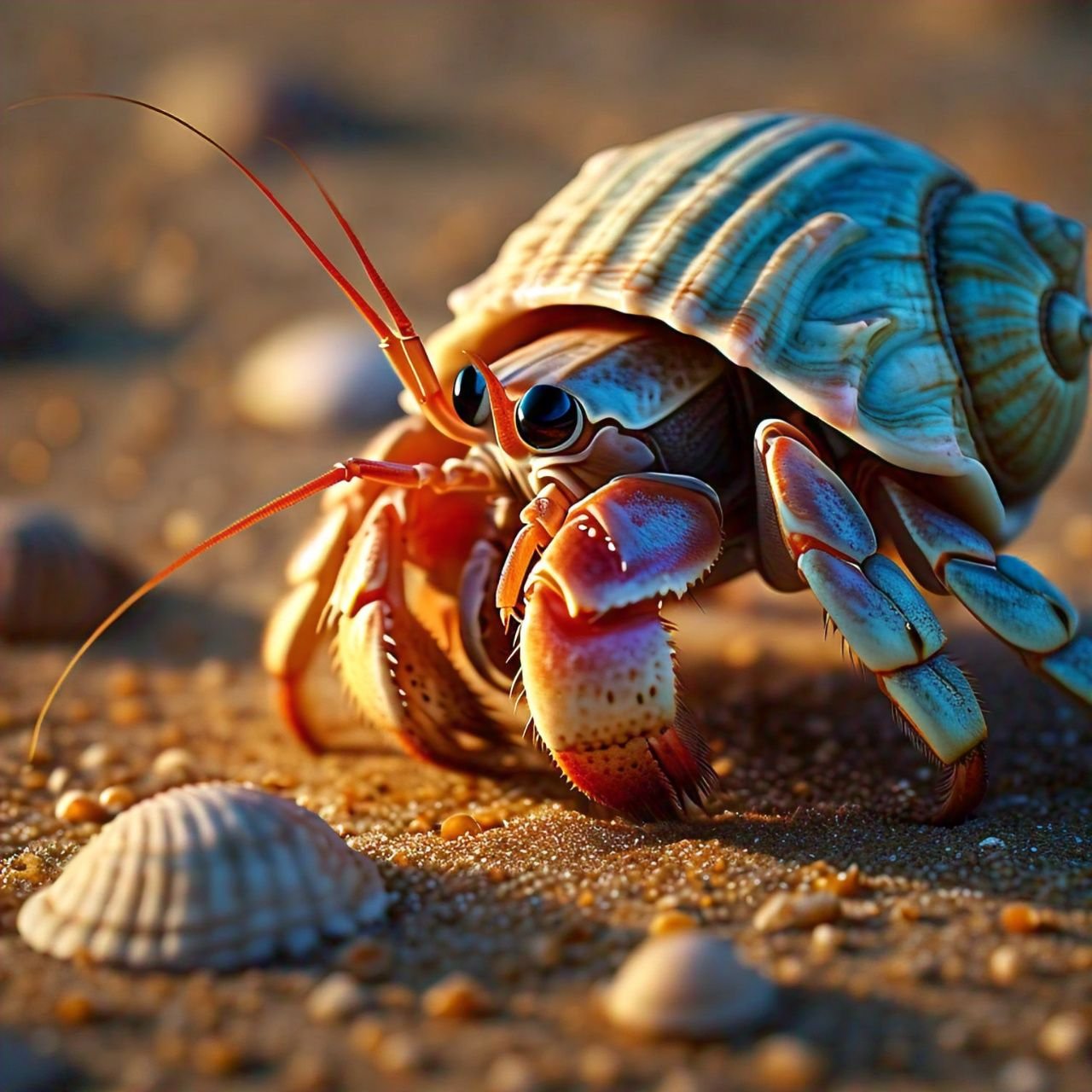Discovering Uncommon Insect Pets: An In-Depth Manual
When it comes to choosing a Unique Invertebrate Pets, many people go for the usual options like dogs, cats, birds, or fish. However, for those interested in something different, invertebrates offer a wide range of options. Invertebrates, such as tarantulas and mantises, can be fascinating and unique pets. Here is a guide to some of the most interesting invertebrate pets, including care tips and what to expect.
Invertebrate pets can be very rewarding for a few reasons: they require less maintenance and space than traditional pets, they provide educational opportunities to learn about biology and ecosystems, and they offer a unique beauty with their diverse shapes, colors, and behaviors.
Popular Unique Invertebrate Pets
- Tarantulas
Care Level: Beginner to Intermediate
Lifespan: 5-30 years, depending on species
Diet: Insects (crickets, roaches, mealworms)
Housing: Tarantulas need a terrarium with substrate for burrowing and hiding spots. It is important to monitor the humidity and temperature based on the species’ natural habitat.
Notable Species:
- Mexican Red Knee (Brachypelma smithi)
- Chilean Rose Hair (Grammostola rosea)
- Pink Toe (Avicularia avicularia)
Behavior: Most of these spiders are active at night and prefer to be alone. While some species can be touched, it is important to do some research beforehand because handling can make the spider stressed.
- Praying Mantises
Care Level: Easy
Lifespan: 6 months to 1 year
Diet: Live insects like small crickets and flies
Housing: Mantises need a tall tank with a lot of plants for climbing and molting. They like moderate humidity and temperature.
Notable Species:
- Chinese Mantis (Tenodera sinensis)
- Ghost Mantis (Phyllocrania paradoxa)
- Orchid Mantis (Hymenopus coronatus)
Behavior: Praying mantises are good at hunting and are fun to watch. It is best not to handle them too much as they are fragile.
- Giant African Millipedes
Care Level: Easy
Lifespan: 5-7 years
Diet: Fruits, vegetables, and decaying plants
Housing: A tank with a deep layer of dirt for digging, high humidity, and places to hide.
Behavior: These millipedes are calm and can be picked up. They roll into a ball when they feel threatened but are usually curious and active.
- Stick Insects
Care Level: Easy
Lifespan: 1-2 years
Diet: Leaves from plants like oak, ivy, and bramble
Housing: Tall cages with lots of branches to climb on and leaves to eat. Keep the humidity moderate.
Notable Species:
- Indian Stick Insect (Carausius morosus)
- Giant Spiny Stick Insect (Eurycantha calcarata)
Behavior: Stick insects are experts at blending in with their surroundings and can remain very still, making them fun to watch.
Essential Care Tips for Unique Invertebrate Pets
- Research Specific Needs: Each type of invertebrate has its own requirements for where they live, what they eat, and how they should be cared for. Be sure to do thorough research on the specific needs of your invertebrate pet.
- Proper Enclosures: Make sure the tank or container is secure, as many invertebrates are good at escaping. Provide enough space, suitable bedding, and places for them to hide.
- Humidity and Temperature: Keep an eye on and maintain the right levels of humidity and temperature for your invertebrate’s natural environment.
- Handling: Some invertebrates can be picked up, but many are better off being watched without being touched often to prevent stress or harm.
- Diet: Give your invertebrate a diet that is right for their species. Some carnivorous invertebrates, like tarantulas and mantises, need live prey.
Conclusion
Keeping invertebrates as pets can be a unique and educational experience. Whether you’re interested in the mysterious charm of tarantulas or the delicate beauty of mantises, there’s an invertebrate pet out there that will catch your attention. With the proper care and attention, these captivating creatures can thrive.
FAQs about Unique Invertebrate Pets
What is the easiest invertebrate pet to have?
The Giant African Millipede is often considered the easiest invertebrate pet to care for. They are low maintenance, friendly, and need simple care like feeding them fruits, vegetables, and decaying plant matter. They also need a tank with high humidity and enough substrate for burrowing.
What pets are invertebrates?
Invertebrate pets come in many different species. Some popular invertebrate pets include:
- Tarantulas
- Praying Mantises
- Giant African Millipedes
- Stick Insects
- Scorpions
- Hermit Crabs
- Snails
- Ant Farms
- Beetles
- Butterflies/Moths (from caterpillars to butterflies/moths rearing kits)
What are 20 examples of invertebrates?
Here are 20 examples of invertebrates, some of which can be kept as pets:
- Tarantula (Brachypelma smithi)
- Praying Mantis (Tenodera sinensis)
- Giant African Millipede (Archispirostreptus gigas)
- Stick Insect (Carausius morosus)
- Emperor Scorpion (Pandinus imperator)
- Hermit Crab (Coenobita clypeatus)
- Snail (Achatina fulica)
- Ant (Formica species, like in ant farms)
- Beetle (Dynastes hercules)
- Butterfly (Danaus plexippus, as caterpillar/butterfly kits)
- Moth (Actias luna, as caterpillar/moth kits)
- Cockroach (Gromphadorhina portentosa)
- Centipede (Scolopendra subspinipes)
- Sea Anemone (Entacmaea quadricolor, in saltwater aquariums)
- Starfish (Asterias rubens, in saltwater aquariums)
- Coral (various species, in saltwater aquariums)
- Crayfish (Procambarus clarkii)
- Vinegaroon (Mastigoproctus giganteus)
- Fiddler Crab (Uca pugnax)
- Land Crab (Cardisoma armatum)
Which invertebrate pet has the longest lifespan?
The Tarantula is typically the invertebrate pet with the longest lifespan. Depending on the species, tarantulas can live anywhere from 5 to 30 years, with females generally living much longer than males. For instance, the Mexican Red Knee Tarantula (Brachypelma smithi) can live up to 30 years in captivity.
What are the advantages of having invertebrate pets?
Invertebrate pets are easy to take care of, require less space, and can be captivating to observe. They also serve as great educational tools, offering insights into biology and ecology.
Are invertebrate pets safe to handle?
While some invertebrates can be handled, it is essential to research the specific species beforehand. Many invertebrates can be fragile or may get stressed when handled frequently. Some, such as tarantulas and scorpions, may exhibit defensive behaviors like biting or stinging.
What do invertebrate pets eat?
The diet of invertebrate pets varies depending on the species.
- Tarantulas and praying mantises eat live insects.
- Giant African Millipedes consume fruits, vegetables, and decaying plant matter.
- Stick insects primarily feed on leaves from plants like bramble, oak, and ivy.
How can I create a habitat for my invertebrate pet?
To set up an enclosure for your invertebrate pet, you need to understand its specific needs. Some common requirements include:
- Suitable substrate (such as soil, coconut fiber, or sand)
- Hiding spots (like logs, leaves, or rocks)
- Proper humidity and temperature levels
- Secure lid to prevent any escapes
Where can I purchase invertebrate pets?
You can buy invertebrate pets from specialty pet stores, reptile and exotic pet expos, online breeders, and sometimes even local pet shops. Make sure to always buy from reputable sources that offer healthy and ethically sourced animals.
Owning a unique invertebrate pet can introduce you to a fascinating world of natural wonders, providing an extraordinary pet ownership experience that combines both education and entertainment.

